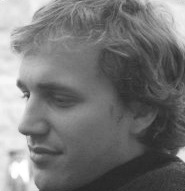As those of you who come round here regularly know, I’m not a composer or musician but I am an experienced listener with limited patience for things that take too long to get to the point. As a practical matter, that means that music I’ve never heard before has about 30 seconds to grab my attention. I’ll listen to the whole thing but if doesn’t have that “Holy shit” thing happening in the first few bars, chances are the earth is never going to move for me. Call it the Jerry Principle: musical masterpieces announce their masterpiece-ness in 16 bars or less. Go ahead, prove me wrong.
Most years you’re lucky to hear for the first time one or two compositions that grab you by the throat and won’t let go but in the last couple of weeks, I have encountered three such pieces.
 First, there is a new large-scale cantata called Athanor by the 35-year-old French composer Guillaume Connesson, about whom I know little, except that he is obviously not a spectralist. Based on an allegorical theme that somehow involves alchemy (the French are tedious with their obligatory intellectual pretentions) Athanor is relentlessly tonal and dramatic, recalling the heyday of the big bold orchestrators like Vaughn Williams and Prokofiev. It is uncool to mention Carl Orff these days but Connesson has that kind of dramatic flair and wastes no time in making it apparent. Supernova for orchestra, the second piece on the CD, confirms his gift for orchestral drama.
First, there is a new large-scale cantata called Athanor by the 35-year-old French composer Guillaume Connesson, about whom I know little, except that he is obviously not a spectralist. Based on an allegorical theme that somehow involves alchemy (the French are tedious with their obligatory intellectual pretentions) Athanor is relentlessly tonal and dramatic, recalling the heyday of the big bold orchestrators like Vaughn Williams and Prokofiev. It is uncool to mention Carl Orff these days but Connesson has that kind of dramatic flair and wastes no time in making it apparent. Supernova for orchestra, the second piece on the CD, confirms his gift for orchestral drama.
The second piece is not that new but I just heard it for the first time– Kaja Saariho’s Graal théâtre, for violin & orchestra. IMHO, as the kids say online, this the first absolute violin concerto masterwork to come along since Berg, or maybe Barber. Gideon Kremer reaches deep into his considerable bag of tricks for every possible sound (and some that are clearly impossible). The rest of the CD is also marvelous–Dawn Upshaw sings the 5-song set Chateau de L’ame beautifully and Amers, for cello & electro-acoustic ensemble is a suitably gnarly antidote to L’ame’s sweetness. But, Graal théâtre is one for the ages.
Kaja Saariho’s Graal théâtre, for violin & orchestra. IMHO, as the kids say online, this the first absolute violin concerto masterwork to come along since Berg, or maybe Barber. Gideon Kremer reaches deep into his considerable bag of tricks for every possible sound (and some that are clearly impossible). The rest of the CD is also marvelous–Dawn Upshaw sings the 5-song set Chateau de L’ame beautifully and Amers, for cello & electro-acoustic ensemble is a suitably gnarly antidote to L’ame’s sweetness. But, Graal théâtre is one for the ages.
 And while we are waving red flags, is there a single note of Osvaldo Golijov that is not destined for immortality? His latest bid for the magic ring is Oceana, an impossibly beautiful setting of a poem by Pablo Neruda for guitars, percussions, chorus, and solo vocalists–in this case, the wonderful sambanista Luciana Souza. Easy listening World Music, you say? Phooey, I say. Most composers would kill to have written Oceana or the other pieces on the CD–Tenebrae, a two-movement meditation on sadness written for the Kronos Quartet or the Three Songs written for Dawn Upshaw.
And while we are waving red flags, is there a single note of Osvaldo Golijov that is not destined for immortality? His latest bid for the magic ring is Oceana, an impossibly beautiful setting of a poem by Pablo Neruda for guitars, percussions, chorus, and solo vocalists–in this case, the wonderful sambanista Luciana Souza. Easy listening World Music, you say? Phooey, I say. Most composers would kill to have written Oceana or the other pieces on the CD–Tenebrae, a two-movement meditation on sadness written for the Kronos Quartet or the Three Songs written for Dawn Upshaw.
Gramophone’s reviewer quotes an unnamed New York critic (was it you, Alex?) as saying that Golijov’s fans are just waiting for him to write a Very Important Work that will put him in the league with John Adams. Speaking as someone who has hung on every note since my first spirtually-awakening discovery of The Dreams and Prayers of Issac the Blind, that wait was over a long time ago.
 On Aug 9 The BBC National Orchestra of Wales, conducted by David Atherton, presented the first performance of …onyt agoraf y drws…(…unless I open the door…) by Welsh composer
On Aug 9 The BBC National Orchestra of Wales, conducted by David Atherton, presented the first performance of …onyt agoraf y drws…(…unless I open the door…) by Welsh composer  Mayke studied piano and composition with Martijn Padding, Gilius van Bergeijk, Daan Manneke, Alexandre Hrisanide and Bart van de Roer at the conservatories of Amsterdam, Tilburg and The Hague. In 2004-2006 she was composer-in-residence with the Nieuw Ensemble. During the summer of 2005 she spent three months as artist-in-residence in Aldeburgh, England supported by a scholarship from Arts Council England, and in 2003 and 2006 she took part in the European interdisciplinairy workshop ‘Ziel 1 = Kunst’ in Oslip, Austria as representative of the Netherlands. Visit the link above and you’ll know exactly why Thea Derks wrote:
Mayke studied piano and composition with Martijn Padding, Gilius van Bergeijk, Daan Manneke, Alexandre Hrisanide and Bart van de Roer at the conservatories of Amsterdam, Tilburg and The Hague. In 2004-2006 she was composer-in-residence with the Nieuw Ensemble. During the summer of 2005 she spent three months as artist-in-residence in Aldeburgh, England supported by a scholarship from Arts Council England, and in 2003 and 2006 she took part in the European interdisciplinairy workshop ‘Ziel 1 = Kunst’ in Oslip, Austria as representative of the Netherlands. Visit the link above and you’ll know exactly why Thea Derks wrote: David’s recently been dropping by to comment, both at S21 and NewMusicBox (howdy, David! Y’all come back’n set a spell, hear?…). But since he’s new enough to not be one of our “regulars”, I thought I’d introduce you to his excellent work — by turns dark, contemplative, moody and even violently voluptuous. The link above will take you to his website/blog, which includes a number of complete MP3s (and a couple M4a’s for you iTunes folk). For a little info, I’ll let him tell it:
David’s recently been dropping by to comment, both at S21 and NewMusicBox (howdy, David! Y’all come back’n set a spell, hear?…). But since he’s new enough to not be one of our “regulars”, I thought I’d introduce you to his excellent work — by turns dark, contemplative, moody and even violently voluptuous. The link above will take you to his website/blog, which includes a number of complete MP3s (and a couple M4a’s for you iTunes folk). For a little info, I’ll let him tell it:
 From the Philip Glass Archive – Vol. 2: Orchestral Music dips into Glass’ “world music” bag for Days and Nights in Rocinha, a 23-minute musical tribute to the Brazilian neighborhood that is home to the world-famous “samba school” and a place that Glass’ frequented often in the 1980’s and 1990’s. The piece was premiered in 1998 as a Dance for Dennis Russell Davies and Orchestra by the Vienna Radio Symphony Orchestra. It’s an engaging piece that demonstrates once again that Glass coasting is better than most composers trying their damnedest.
From the Philip Glass Archive – Vol. 2: Orchestral Music dips into Glass’ “world music” bag for Days and Nights in Rocinha, a 23-minute musical tribute to the Brazilian neighborhood that is home to the world-famous “samba school” and a place that Glass’ frequented often in the 1980’s and 1990’s. The piece was premiered in 1998 as a Dance for Dennis Russell Davies and Orchestra by the Vienna Radio Symphony Orchestra. It’s an engaging piece that demonstrates once again that Glass coasting is better than most composers trying their damnedest. I wasn’t able to make the premiere screening on July 4 but I’ve been hearing a lot of buzz about a new documentary film called The End of New Music, which follows Judd Greenstein, David T. Little, and Missy Mazzoli, the founders of Free Speech Zone, as they tour the East Coast with the groups Newspeak and NOW Ensemble, playing concerts in unlikely venues like clubs and bars and bringing new music to audiences that might not otherwise be exposed to it. The film, directed by Stephen S. Taylor, takes a verite approach to the tour, combined with interviews and various performance footage. You can watch video samples or buy a copy at
I wasn’t able to make the premiere screening on July 4 but I’ve been hearing a lot of buzz about a new documentary film called The End of New Music, which follows Judd Greenstein, David T. Little, and Missy Mazzoli, the founders of Free Speech Zone, as they tour the East Coast with the groups Newspeak and NOW Ensemble, playing concerts in unlikely venues like clubs and bars and bringing new music to audiences that might not otherwise be exposed to it. The film, directed by Stephen S. Taylor, takes a verite approach to the tour, combined with interviews and various performance footage. You can watch video samples or buy a copy at  They’ll tell you: Nexsound has been dedicated to the unusual and experimental music, both acoustic and electronic, that could be of any style and trend released on CDs and MP3 files. The term that describes music released by Nexsound best is probably “environmental music”, and it is often like “indocile ambient”. Nexsound music envelops you, listening to it feels like immersing into the very special atmosphere that this music creates, and thus it is intended rather for private listening. We pay the very special attention to the package of CDs released, so they look and feel very nice.
They’ll tell you: Nexsound has been dedicated to the unusual and experimental music, both acoustic and electronic, that could be of any style and trend released on CDs and MP3 files. The term that describes music released by Nexsound best is probably “environmental music”, and it is often like “indocile ambient”. Nexsound music envelops you, listening to it feels like immersing into the very special atmosphere that this music creates, and thus it is intended rather for private listening. We pay the very special attention to the package of CDs released, so they look and feel very nice.